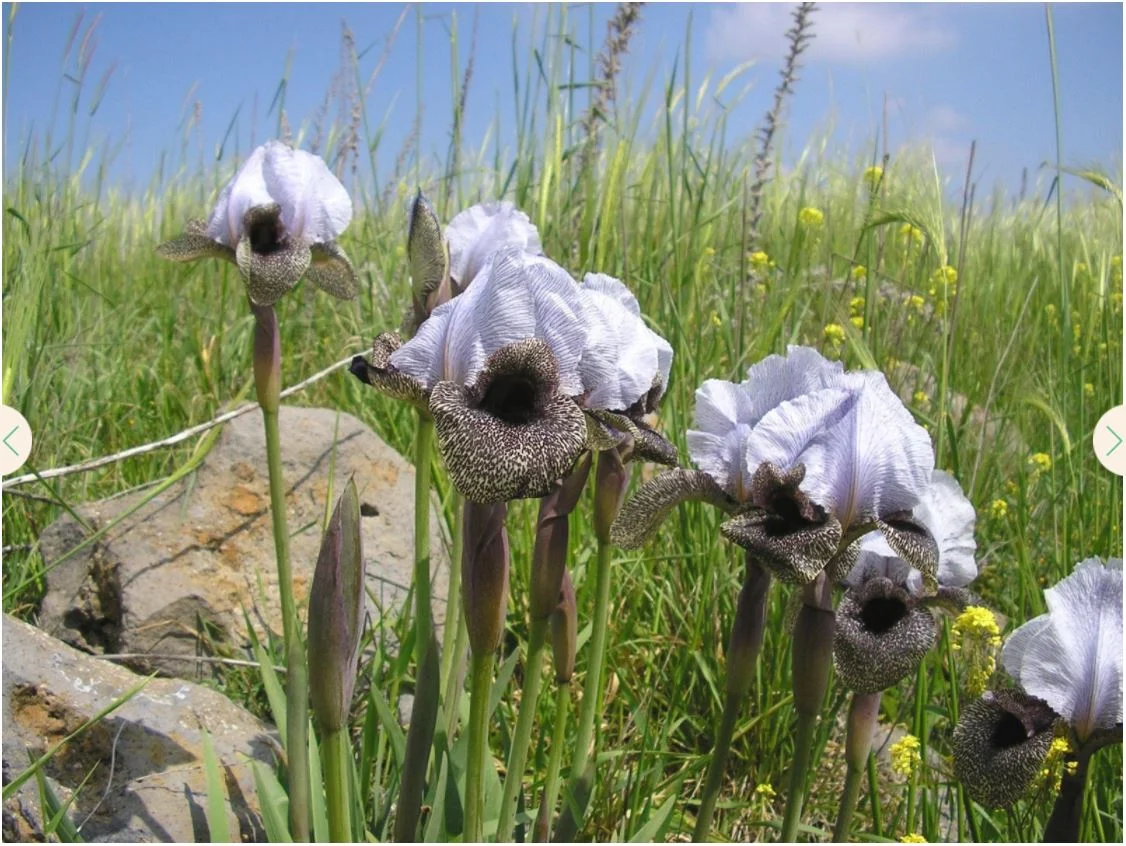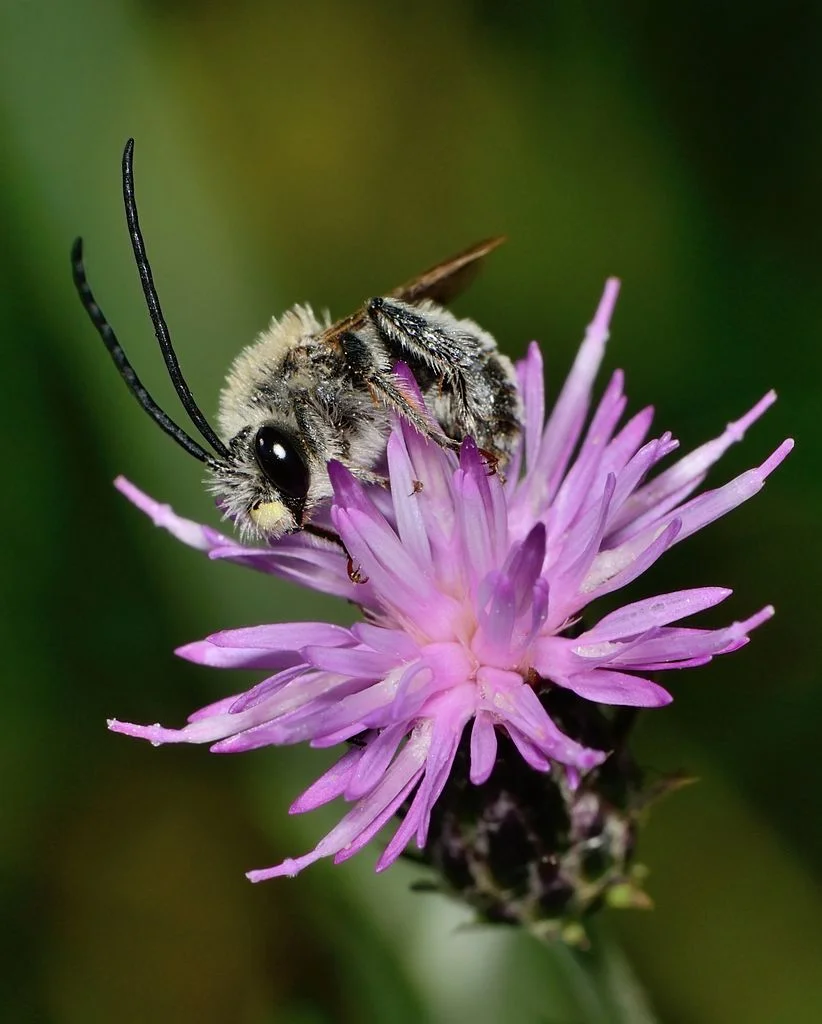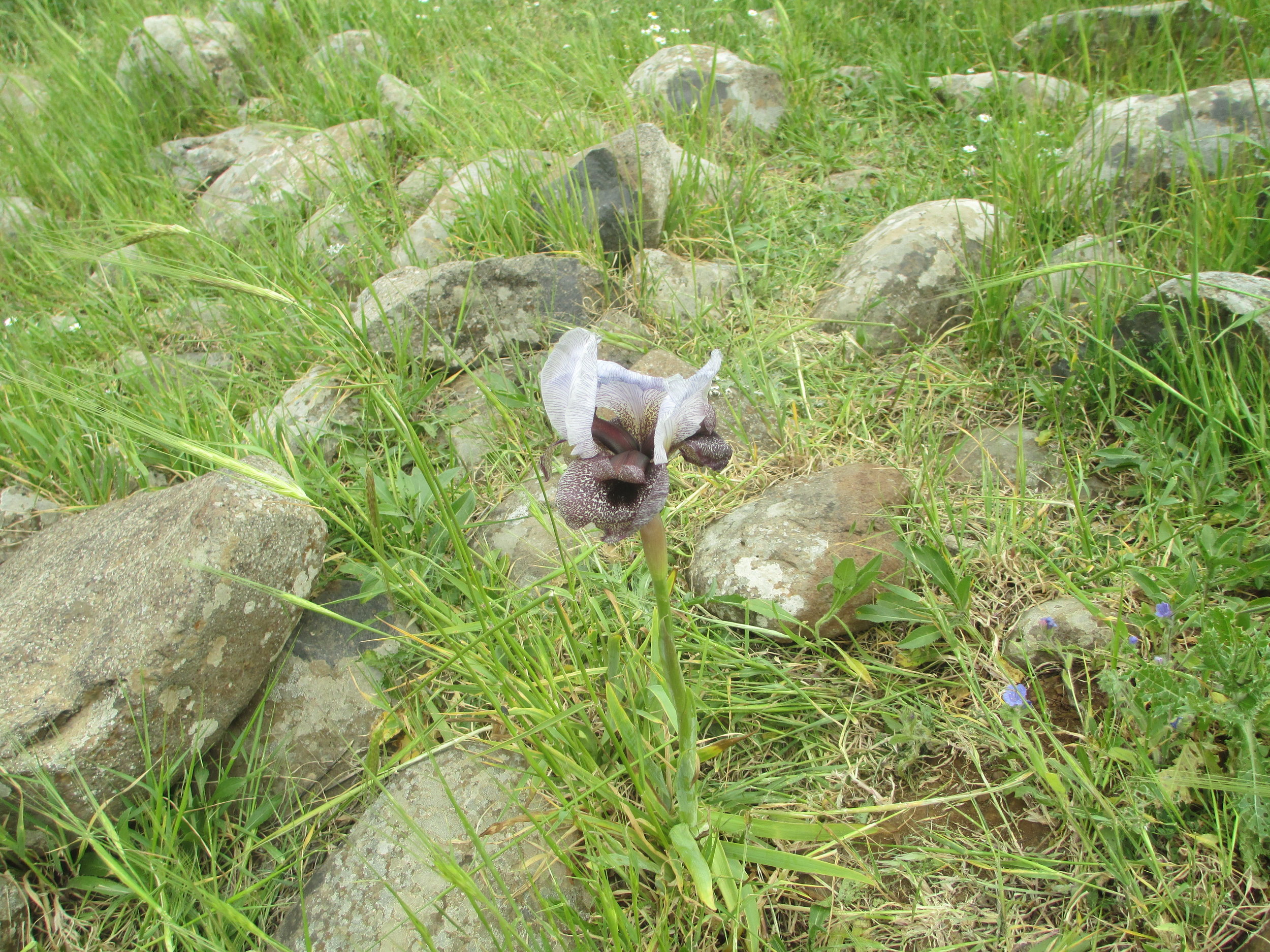The Golan iris (Iris hermona) is a member of the Oncocyclus section, an elite group of 32 Iris species native to the Fertile Crescent region of southwestern Asia. They are some of the showiest irises on the planet. Sadly, like many others in this section, the Golan iris is in real danger of going extinct.
The Golan iris has a rather limited distribution. Despite being named in honor of Mt. Hermon, it is restricted to the Golan Heights region of northern Israel and southwestern Syria. Part of the confusion stems from the fact that the Golan iris has suffered from a bit of taxonomic uncertainty ever since it was discovered. It is similar in appearance to both I. westii and I. bismarckiana with which it is frequently confused. In fact, some authors still consider I. hermona to be a variety of I. bismarckiana. This has led to some serious issues when trying to assess population numbers. Despite the confusion, there are some important anatomical differences between these plants, including the morphology of their rhizomes and the development of their leaves. Regardless, if these plants are in fact different species, it means their respective numbers in the wild decrease dramatically.
Photo by Dr. Avishai Teicher Pikiwiki Israel licensed under CC BY 2.5
Like other members of the Oncocyclus group, the Golan iris exhibits an intriguing pollination syndrome with a group of bees in the genus Eucera. Their large, showy flowers may look like a boon for pollinators, however, close observation tells a different story. The Golan iris and its relatives receive surprisingly little attention from most of the potential pollinators in this region.
One reason for their lack of popularity has to do with the rewards (or lack thereof) they offer potential visitors. These irises produce no nectar and very little pollen. Because of this and their showy appearance, most pollinators quickly learn that these plants are not worth the effort. Instead, the only insects that ever pay these large blossoms any attention are male Eucerine bees. These bees aren't looking for food or fragrance, however. Instead, they are looking for a place to rest.
A Eucerine bee visiting a nectar source. Photo by Gideon Pisanty (Gidip) גדעון פיזנטי • CC BY 3.0
The Oncocyclus irises cannot self pollinate, which makes studying potential pollinators a bit easier. During a 5 year period, researchers noted that male Eucerine bees were the only insects that regularly visited the flowers and only after their visits did the plants set seed. The bees would arrive at the flowers around dusk and poke around until they found one to their liking. At that point they would crawl down into the floral tube and would not leave again until morning. The anatomy of the flower is such that the bees inevitably contact stamen and stigma in the process. Their resting behavior is repeated night after night until the end of the flowering season and in this way pollination is achieved. Researchers now believe that the Golan iris and its relatives are pollinated solely by these sleeping male bees.
Sadly, the status of the Golan iris is rather bleak. As recent as the year 2000, there were an estimated 2,000 Golan irises in the wild. Today that number has been reduced to a meager 350 individuals. Though there is no single smoking gun to explain this precipitous decline, climate change, cattle grazing, poaching, and military activity have exacted a serious toll on this species. Plants are especially vulnerable during drought years. Individuals stressed by the lack of water succumb to increased pressure from insects and other pests. Vineyards have seen an uptick in Golan in recent years as well, gobbling up viable habitat in the process.
Photo by Dr. Avishai Teicher Pikiwiki Israel licensed under CC BY 2.5
It is extremely tragic to note that some of the largest remaining populations of Golan irises can be found growing in active mine fields. It would seem that one of the only safe places for these endangered plants to grow are places that are extremely lethal to humans. It would seem that our propensity for violent tribalism has unwittingly led to the preservation of this species for the time being.
At the very least, some work is being done not only to understand what these plants need in order to germinate and survive, but also assess the viability of relocated plants that are threatened by human development. Attempts at transplanting individuals in the past have been met with limited success but thankfully the Oncocyclus irises have caught the eye of bulb growers around the world. By sharing information on the needs of these plants in cultivation, growers can help expand on efforts to save species like the Golan iris.
Photo Credits: [1] [2] [3] [4]
Further Reading: [1] [2] [3] [4]



